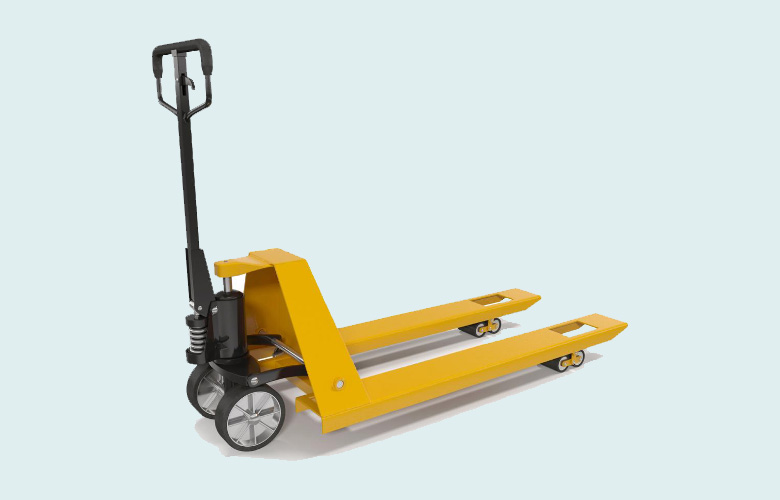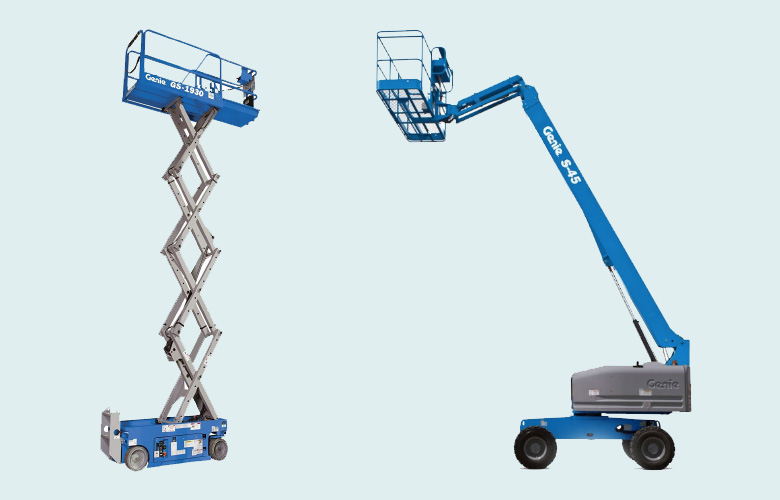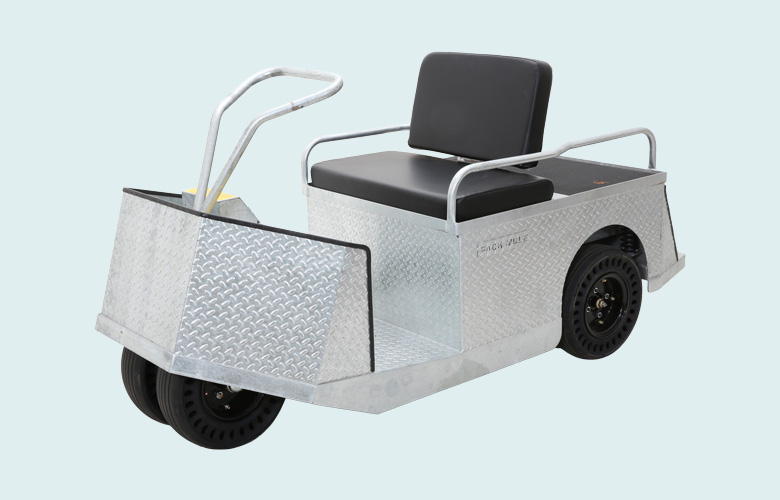A Pallet Jack is a piece of equipment used to lift, carry, and move pallets. They are mainly used in warehouses for moving pallets of stocks or inventory; and in construction sites for moving pallet-loaded construction materials. Pallet Jacks are either electric or manual: of the two, the manual variety is a bit trickier to operate as it relies purely on hydraulics to be able to move and lift loads. Although it seems like a simple device to operate, proper training and familiarity with the manual are needed before you can attempt to use one. Misuse or wrongful operation of these tools may result in serious injuries and may cause damage to nearby structures and the cargo being lifted, so it’s important to know how these devices are handled in a safe and responsible manner. Your friends here at Hi Lo Industrial Trucks would like to share some safety tips for using pallet jacks in your site or warehouse.
Use Pallet Jacks Responsibly – Never carry any people on the Pallet Jack or attempt to ride it like a scooter: it’s not one. Avoid using the pallet jack for horseplay or for reckless stunts. Make sure that the jack works properly by testing the controls before loading, and plan your route before proceeding. By the way; make sure that you’re dressed in the proper attire before using the pallet jack: ensure that you’re wearing foot protection and the proper gloves. Never overload the jack: stay below the jack’s maximum load capacity and don’t exceed it. Inspect the pallet jack before and after use.
Use common sense when working with Pallet Jacks – Never; NEVER place your feet or hands (or any other part of your body, for that matter) under the pallet jack’s forks. And while you’re at it, avoid doing the same with the pallet itself. Be wary of the jack’s moving parts; as some of them may “pinch” your hands. When operating the pallet jack, use proper lifting, loading, and unloading techniques. Never leave your pallet jack unattended, and park it on a level floor with the forks in a lowered position. Don’t leave your jack in front of emergency structures or entrances and exits, and park it in a dry place; avoiding slippery surfaces and floors.
Use proper positioning – Of the Pallet Jack’s forks; that is. Make sure the forks are totally dead center of the load to avoid tipping, and ensure that the load is properly balanced and stable before you move. Also, make sure that the forks are under the pallet itself. When using the jack, keep the pallet an inch above the floor, as this makes for a more stable operation.
Use pushing force, never pulling force – Pushing the Pallet Jack reduces the possibility of injury, as your body uses your leg muscles to apply force to the load and keeps your spine (and your back) in a straight position. You may pull the jack only in very small increments, to adjust its position or the position of its load.
Use caution when moving on an inclined plane – Pallet Jacks are especially dangerous to use when your floor is inclined (Such as loading ramps). Never put yourself downhill of the jack when operating at an incline. Always stand behind it (uphill), use a pushing force, and never use it on uneven floors or areas with floor debris.
Use the proper speed and motion – Don’t push your pallet jack at fast speeds. Use gradual stops and starts instead. Use wide turns when moving around corners to avoid hitting doors or racks (or other nearby structures). If you’re not sure about the accuracy of your turns, have someone “spot” you. Stop moving if someone is in front of you: make sure they see you and know that you’re moving towards them to avoid nasty accidental collisions.
Hi Lo Industrial Trucks Co. is ready to provide a wide selection of Forklifts for sale; as well as Forklifts and Pallet Jacks for rent to help you with your lifting and loading needs. We can also service your Forklifts, Pallet Jacks, Aerial Lifts, Boom Lifts, Sweepers, Scrubber, Tugs, Golf Carts and more! Place a request for parts or accessories for your equipment online, or contact us at 313-843-6466 for inquiries or for more information.



